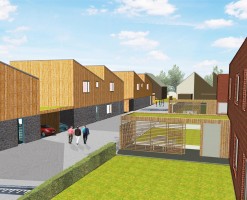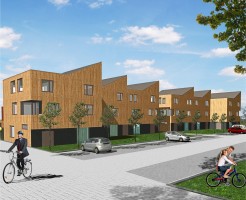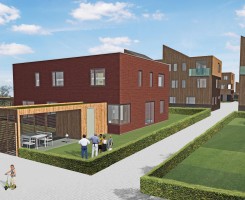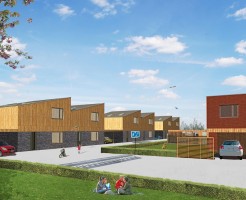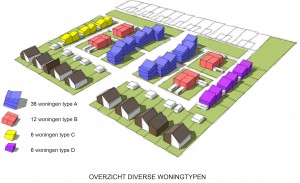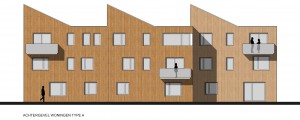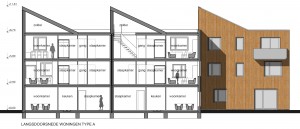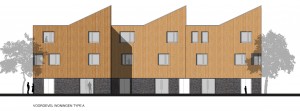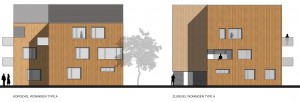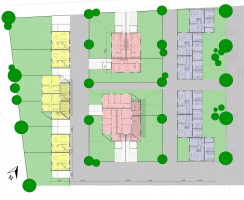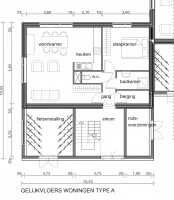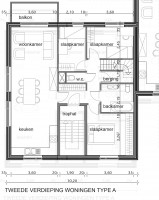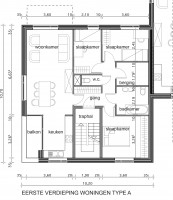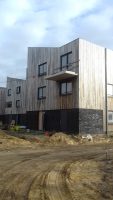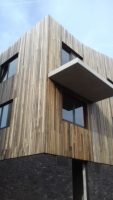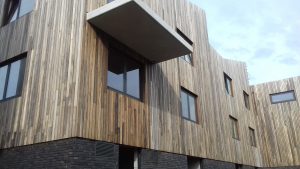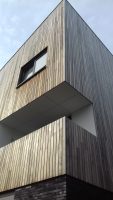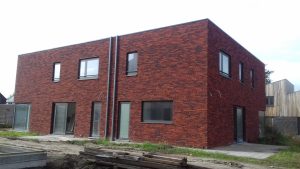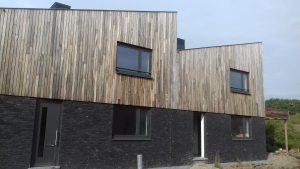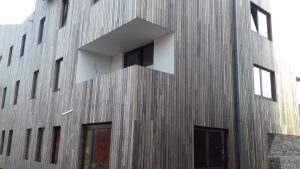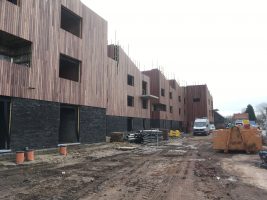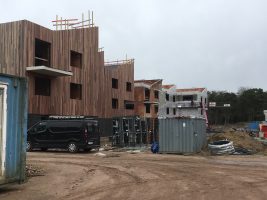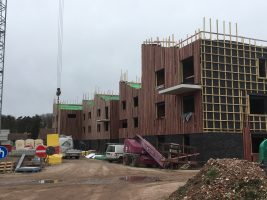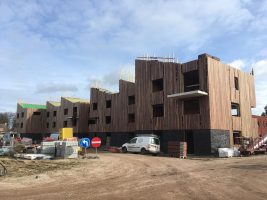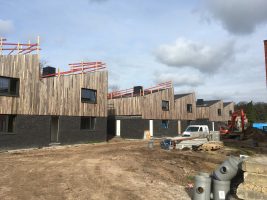This design is the winning design of a prize competition that was held by a social housing organisation in Antwerp. The location, the number of dwellings and compulsory demands were given up front by the organisation. Furthermore there is an urban site plan that was given. In this particular design the urban site plan has been respected by the architect although the exact position of the dwellings and appartmentblocks differ to the urban plan, only to make it better. The building site is in Belgium, in Essen, which is surrounded by lots of forrest.
There are three types of dwellings, there are the side to side dwellings with carports located next to them, then there are the back to back dwellings with a garden all around the building volume and then there are the appartments in the appartmentblocks.
The side to side dwellings are located on the edges of the building site. The garages en bicycle sheds are designed and placed out of the insulated façades in order to minimalize energy losses in terms of heating. The dwellings are desiged to have a through-room, which allows the sun to enter the house all through the day. On the front side there is the living area while on the other side one can find the kitchen.
Due to positioning the back to back dwellings as a group in the midst of the building plot, the area is remarkably open all around it. The carports and garden sheds are made of wood and look rather light and transparant. These areas can also be used as a terrace. The façades are made out of brick, while these dwellings have a flat roof, which makes them easy going volumes creating a sense of harmony in the middle of this urban area.
By creating compact volumes and linking them to each other there is a minimal loss in terms of energy and heating going to waste. The slopes in the roofs are south orientated, which means solar panels can easily be placed in order to produce sustainable energy. All flat roofs are made of green roofs, not only because of the esthetics but mostly because of the advantages regarding rainwater. Every dwelling with garden has its own water hole, so rainwater can be re-used in order to flush toilets and for watering the lawn and plants. The façades are made out of sustainable wood, which refers to the forrest and her trees surrounding this urban site.
This project was realised under command of: Groep Archo architecten, see: www.archo.be

